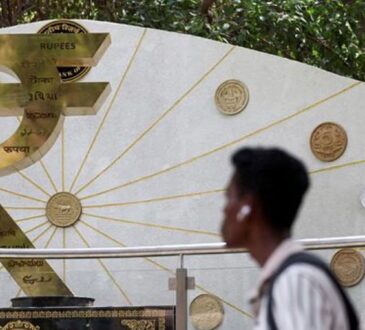Chuck Zhang, CFO of PolyFlow, Payment Infrastructure for Web3.0.
Stablecoins have witnessed a remarkable surge, surpassing a total market value of $230 billion as of this writing. Just five years ago, they were in their infancy. Now, these digital currencies are transforming global finance by simplifying transactions, expediting cross-border trade and facilitating remittances.
Stablecoins are digital currencies that are typically pegged to fiat currencies such as the U.S. dollar (USD) at a 1:1 ratio. They are issued on blockchain networks such as Ethereum and Tron, combining the advantages of blockchain technology with the stability required for practical digital currency applications.
According to Visa’s stablecoin dashboard, even after adjusting for automated transactions, stablecoins settled over $6.5 trillion in the past 12 months. Initially serving as a bridge for crypto assets, stablecoins have evolved and are integrating into everyday transactions beyond the crypto market.
Blockchain’s Integration Into Traditional Finance
Traditional financial institutions and regulators are rapidly adopting blockchain technology. The Bank for International Settlements (BIS) is exploring the idea of a “Finternet,” the Monetary Authority of Singapore (MAS) has announced Global Layer One and Deutsche Bank is working on Layer 2 solutions. Asset management giants including BlackRock and Franklin Templeton are also experimenting with public blockchains.
Stablecoins make value transfer seamless, enabling real-time global transactions at lower costs than traditional banking rails. For consumers, the ability to receive funds instantly with minimal friction is more important than understanding blockchain’s decentralized principles. Just as we use SWIFT without knowing its intricacies, stablecoins can be embedded into mainstream applications, making blockchain an invisible but integral part of payments.
The next major trend is the migration of Web2 applications to Web3, similar to how businesses transitioned from desktop to mobile a decade ago. Blockchain-based payments will increasingly be embedded in applications as stablecoin solutions, making digital assets more accessible to the average user.
Stablecoins’ Advancement
Major financial institutions have validated the rise of stablecoins. PayPal launched PYUSD on a public blockchain, Stripe acquired stablecoin company Bridge for $1.1 billion, Visa partnered with Circle for USDC settlements and Revolut is said to have its own stablecoin plans.
Throughout history, the form and function of money have evolved with the times, and in this digital economy era, stablecoins are spreading rapidly. Just as ordinary users can see PYUSD stablecoins in the PayPal apps, in the near future, I expect we will see various stablecoins in more existing mobile payment applications, contributing to the free transfer of value.
Some argue that blockchain-based payment networks threaten traditional financial systems. However, the bigger picture suggests that traditional institutions can leverage blockchain for efficiency and cost savings.
The Future Of Stablecoins
Through current trends, we can anticipate several points for the future development of stablecoins:
More Stablecoin Issuers
The current stablecoin market is dominated by a few major issuers, but this is likely to change. A more fragmented landscape of interoperable stablecoins will likely emerge, similar to how different commercial banks issue dollars. This shift could reduce costs, increase speed and expand access to stablecoin-based payments.
Stablecoin Orchestration
As stablecoin issuers multiply, interoperability will become crucial. A new market segment—stablecoin orchestration—will facilitate seamless transactions between different stablecoins, much like how Visa and Mastercard handle fiat transactions. If a customer wants to pay in one stablecoin but a merchant only accepts a different stablecoin, an orchestrator will enable instant conversion. Stripe’s acquisition of Bridge highlights the growing need for such interoperability.
Parallel Payment Tracks
Despite the growth of blockchain-based payments, traditional payment systems such as SWIFT and Visa/Mastercard will not disappear overnight. Instead, blockchain solutions will complement legacy systems, integrating innovative technology to enhance financial services while bridging the gap between old and new payment infrastructures.
PayFi And DeFi Integration
Payment financing (PayFi), the fusion of blockchain payments and decentralized finance (DeFi), represents the next stage of financial evolution. By combining smart contracts with financial services, PayFi could enable new global financial products, including lending, wealth management and investment solutions—all anchored in stablecoin-based payments. This shift would expand financial inclusion and create new revenue streams within the digital economy.
Hurdles Upfront
While gaining popularity for legitimate applications, stablecoins have also been misused by high-risk and bad actors for illicit activities such as money laundering and sanctions evasion. Their stable value and global accessibility make them appealing to those seeking to circumvent financial regulations and avoid detection.
The healthy development of the stablecoin ecosystem requires coordinated efforts among international regulators. Clear regulations are essential, and the progression of the U.S. Stable Act is expected to encourage more traditional financial institutions to engage in the compliant stablecoin market, thereby further fostering the industry’s healthy and positive growth.
Conclusion
Stablecoins are ushering in an era of permissionless, scalable and instant payments, lowering friction and unlocking new business opportunities. As traditional payments, stablecoins and blockchain networks continue to integrate, stablecoins will play a central role in cross-border fund transfers, digital capital markets and financial services for underbanked populations.
While blockchain technology moves behind the scenes, stablecoins are taking center stage.
Forbes Finance Council is an invitation-only organization for executives in successful accounting, financial planning and wealth management firms. Do I qualify?




